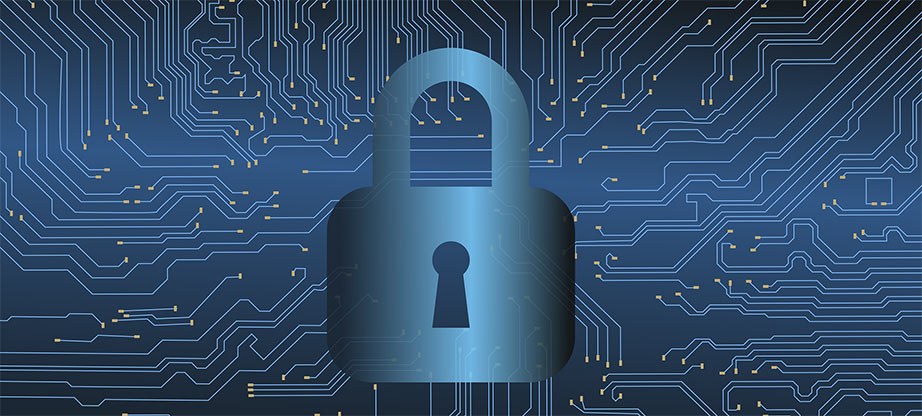Cyber Security Checklist - Your Basic Steps to Take
There’s no denying that hackers’ attacks and security breaches happen more and more often as many people have to work and study online. Consequently, data protection becomes crucial both for individuals and enterprises. Our cyber security checklist will help you get protected in time to prevent unwanted outcomes.

Assess Security Risks
Before taking security precautions, it’s necessary to identify your weak points. Think about sensitive data that you store or share and the ways you do this. It can include private information, financial records, health data, etc. You have to know what can happen if a cyber attack occurs because this will help to react and take control of the situation fast.
Cyber Security Checklist - Steps to Take
When you know the possible outcomes of data leakage, you can start taking preventative measures listed here.
Step 1. Check Users’ Access
Both individuals and enterprise workers have to be careful while accessing different resources. Following password etiquette when going online, you should:
- create complex passwords;
- change passwords regularly;
- set up multi-factor authentication;
- store passwords as encrypted files.
To protect accounts, make sure you update your passwords regularly. If you run a company, instruct your workers to change their passwords. Moreover, remember to deal with outdated accounts, deleting no longer existing users to prevent data leakage.
Step 2. Ensure Secure Data Storage and Control Recovery Options
If you choose to keep all your data on a computer, you have to maintain proper on-site security. Remember to safeguard your hardware with locks and keys to protect locally stored information. The reliability of hardware and software, including anti-virus systems, is no less important. An infected flash drive may incidentally ruin the data stored on a device. Thus, installing trustworthy programs and scanning the operating system will help you protect the assets.
Cloud-based data storage solutions are a popular choice for individuals and companies. While keeping your information on a cloud, it’s vital to limit access to data. In the case of an enterprise, you may assign different roles to employees and control who can get or use specific files. Moreover, constant data activity monitoring and alerting will inform you about any suspicious activities.
Unfortunately, hackers’ attacks do damage business data. To be ready to restore your information and power, it’s necessary to create a security incident response and business recovery plans. Create data backups and store them securely.
Step 3. Strengthen Network Cyber Security
Network protection is of significant importance on the cyber security checklist. In fact, it concerns not only using the Internet but also sending and receiving data via connected devices.
Many companies use Intranet, or a local area network, that links computers and allows data exchange between devices. Besides making Wi-Fi accessible only for employees, enterprises should regulate their ‘Bring Your Own Device’ policy. Controlling which devices can connect to the network reduces cyber attacks. Furthermore, don’t forget about such elementary precautions as locking computers and requiring authorization when users leave them idle.
While surfing the Internet, remember to use a firewall, i.e. a network security system that monitors network traffic and creates barriers for untrusted sources. Additionally, be careful while connecting to unknown networks, as open public Wi-Fi spots are often a perfect place for cybercriminals to retrieve data. Furthermore, visit websites that have an SSL certificate and guarantee safe work.
Constant professional network monitoring will scan your system for vulnerabilities, control the traffic, and prevent attacks and data leakage.
Step 4. Protect Emails and Communications
Emails are a perfect tool for delivering phishing malware both to private and company computers. Make sure that employees use corporate protected emails but not their personal ones for sending work-related data. Similarly, use anti-virus programs to block unwanted emails and protect users if they try to open malicious messages.
Step 5. Stay Updated
Cyber security is a fast-developing area, so following the latest trends helps you establish up-to-the-minute protection. Moreover, make sharing knowledge a part of your cyber security checklist. It’s crucial to instruct your staff on cybersecurity to prevent such human errors as inadvertent disclosure of information to attackers, accidental destruction or modification of files, etc.
Cyber Security Checklist - Summing Up
Cybersecurity is about controlling your assets and monitoring access to them. It comprises various aspects, such as enhancing authorization and securing network access. If you want to safeguard your information fast and trouble-free, get professional, comprehensive data protection with MBS Techservices today.

Categories
For your convenience, we’ve divided our blog on cyber security into several categories so that you can find necessary articles fast and effortlessly. Just choose the category that evokes your interest and enjoy reading.